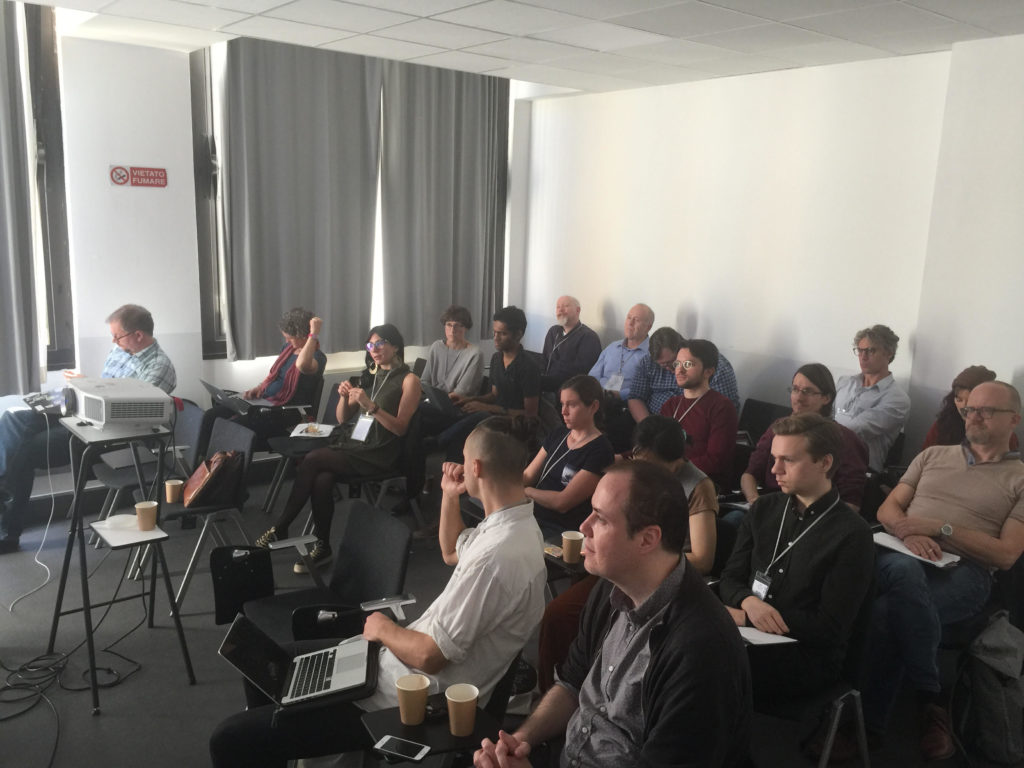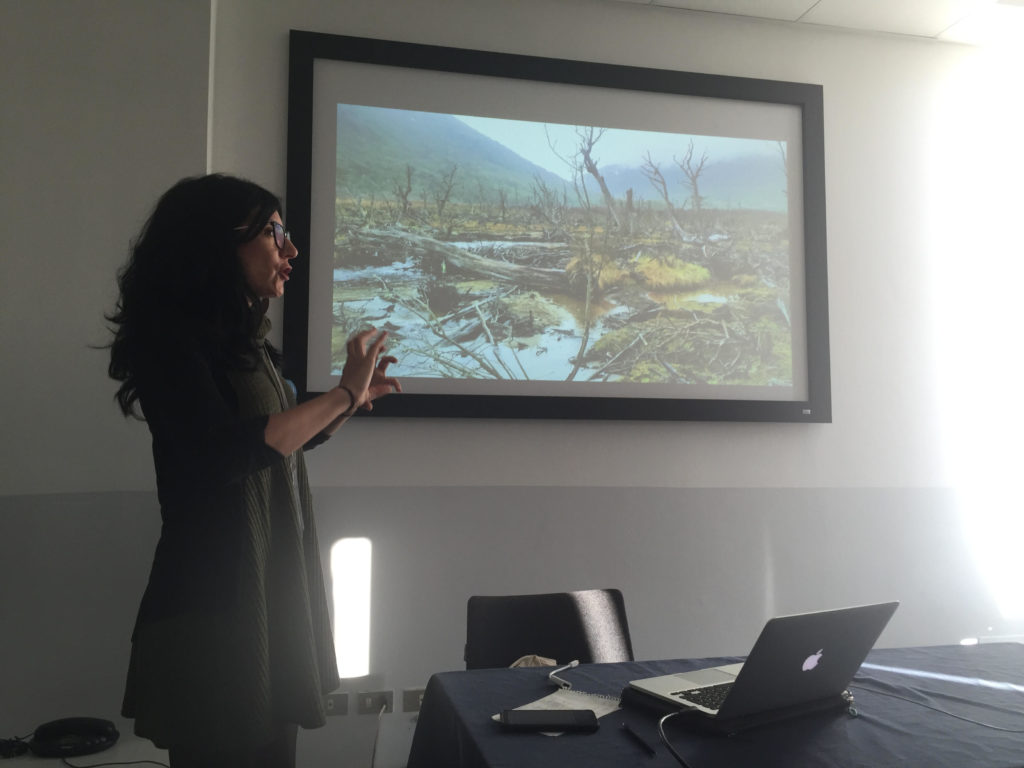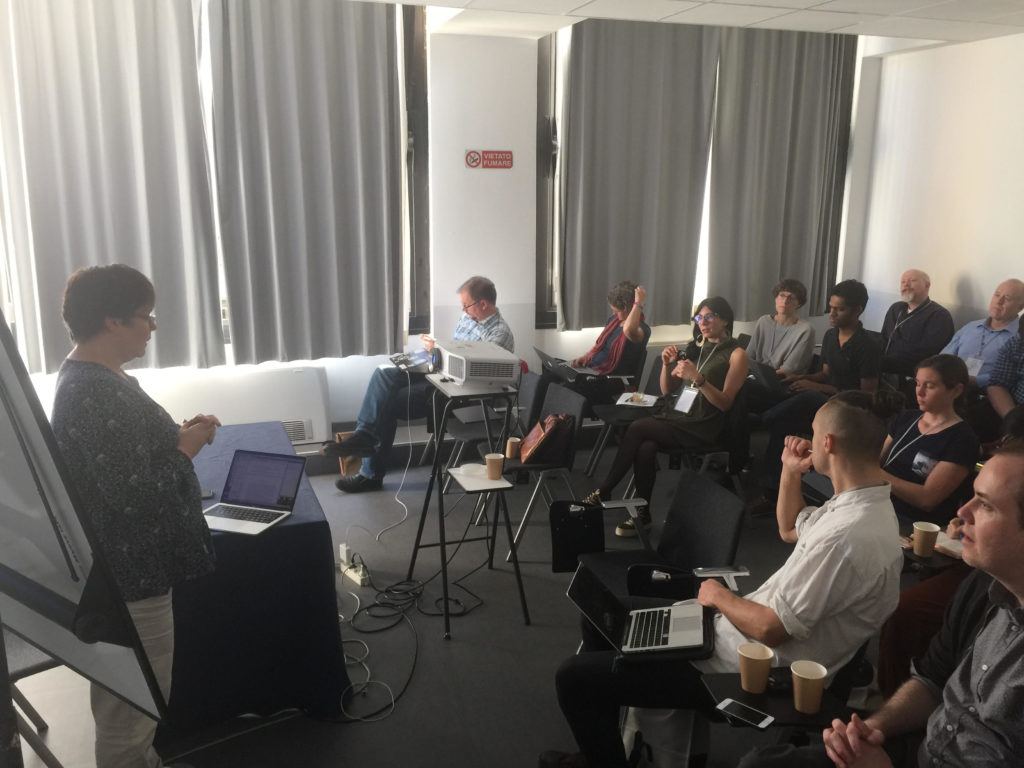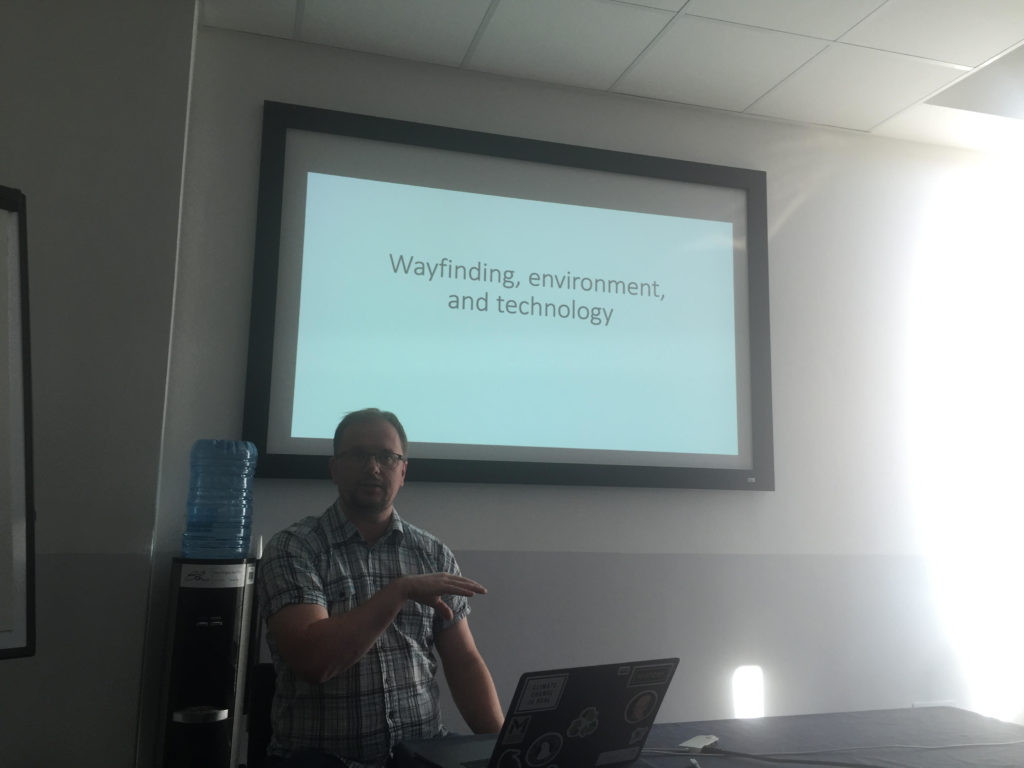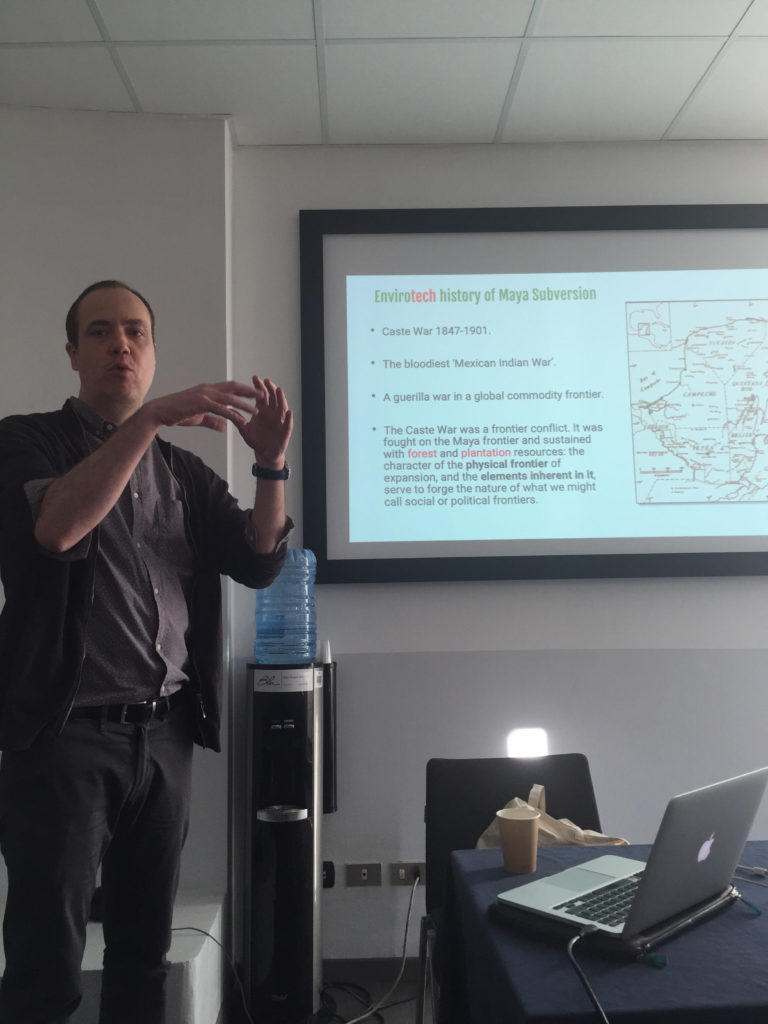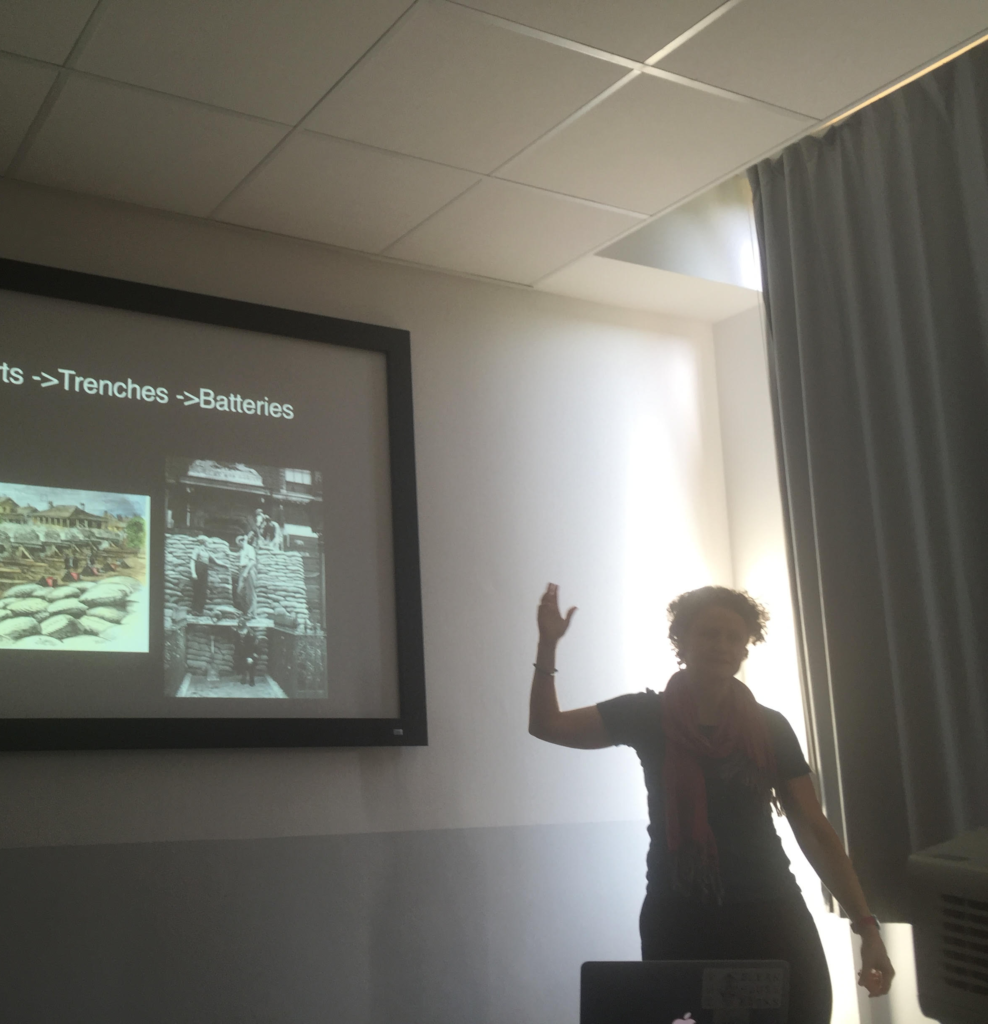For many envirotech scholars, the modern city of Las Vegas is likely to inspire a certain fascinated horror. In its windowless neon-bathed casinos jammed with insanely beeping slot machines and blathering Elvis impersonators, one feels divorced not only from the natural world but, perhaps even more jarringly, from whatever is authentic and organic in the human-built world as well. Walk along the sterile section of Las Vegas Boulevard called “The Strip” and you can pass from a half-sized replica of the Eiffel Tower to a torchlit Egyptian pyramid in the course of a few hours, never once escaping from a corporately controlled and engineered virtual reality. Likewise, the spectacular fountains and shimmering pools of water adorning the Bellagio and other overgrown hotels obviously belie the desert environment that surrounds the city. Along the Las Vegas Strip the organic, authentic, and locally unique — whether they be the products of human or non-human factors — seem to have been banished.
How appropriate, then, that the city was the setting for a scholarly session dedicated to the theme, “Rethinking the Nature-Technology Dichotomy: The Uses of Life in Late Modernity.” Held as part of the Society for the History of Technology’s annual meeting, October 12-15th, this Saturday morning session was a conference highlight for those envirotechies fortunate enough to attend.
Thomas Wieland from the Munich Center for the History of Science and Technology organized the session and also presented his fascinating paper, “Biological Rationality: Changing Attitudes Towards the Uses of Life in Late Modernity.” Late modernity, Wieland argued, has been characterized by a belief in a sharp dichotomy between the natural and technological. As a result, late modern thinkers emphasized technological rationality as the most powerful and accurate way of understanding and manipulating the environment. In this paradigm engineers, scientists, and other experts strove to replace organisms with technology wherever possible. Thus living organisms were translated, both metaphorically and physiologically, into quasi machines, and the rationality of the technical dominated.
In the late 1950s, however, the concept of “bionics” offered a new way of thinking about both technology and biology. As conceived by innovators such as Jack Steele, bionics attempted to use principles derived from living systems in designing technology. Wieland offered a contemporary example of this with a 2005 advertisement for a Mercedes-Benz bionic car. Pairing a picture of the company’s lightweight and highly streamlined automobile with a fish, the ad clearly suggested that “nature is the best engineer.” Another example of this “biological rationality,” Wieland suggested, can be found in integrated pest management strategies that combine chemical and biological controls.
Beginning in the mid-century, then, advanced technological nations began to embrace what Wieland termed “multiple rationalities” for understanding nature and technology. Challenging the earlier domination of the technical way of thinking and seeing the world, biological rationality suggested that nature was not just a passive source of raw materials but rather an invaluable source of ideas for solving modern design problems. Older ideas that nature was best understood in technological terms gave way to the view that technological systems can also be productively understood in biological terms. Biological rationality thus challenged the nature-technology dichotomy by elevating the importance of natural systems and by blurring the boundaries between the natural and technological.
This blurring of the machines and organisms was also explored by Edmund Russell (University of Virginia) in his stimulating paper, “The Incredible Evolving Dog: Making an Animal Modern.” Russell started his talk with the picture of a somewhat unfamiliar looking little dog, asking the audience members if anyone could identify the dog’s breed and job. With this intriguing introduction, Russell suggested that dogs had been modernized in Great Britain in the 19th century, undergoing a process in which humans remade rather than replaced the natural world. Acting through a process of artificial selection, humans became agents of what Russell has termed “evolutionary history”—that is, the history of the human role in guiding (intentionally or unintentionally) the evolution of other organisms and the consequences of this evolution for human societies.
It is through evolutionary history, Russell continued, that we must understand the mysterious small dog he had begun with. This dog, he now revealed, was an extinct breed known as a “Turnspit.” During the early modern period, these little dogs were bred for the purpose of powering wheels rather like those found made today for pet mice and gerbils. In the Turnspit’s case, however, the running wheel was connected to a meat spit before a fire, thus constantly turning the meat so that it would cook evenly.
Why did the Turnspit breed ultimately go extinct? In an apt illustration of the process of evolutionary history, Russell argued that the Turnspit’s niche was eliminated by the development of mechanical clock technology. Spit turning mechanisms were thereafter powered by clock springs or falling weights.
Such hybrid human-nature niches were created, altered, and in some cases eliminated through a variety of forces, Russell argued, including such well-known historical phenomena as the creation of nation states and evolution of the ideology of romanticism. The example of the English bull dog, he argued, demonstrates the role nation states can play in evolutionary history. Initially bred for the purpose of bull baiting, bulls dogs were compact and agile animals with strong jaws—the traits needed to avoid being gored so the dog could get a fierce biting hold on the bull’s face. By the early 19th century, however, the British state had outlawed the practice of bull baiting, in part for moral and religious reasons, but also because the pastime did not fit well with regimentation of the emerging factory system. Unlike the Turnspit, however, the bull dog was saved from extinction by the opening of a new ecological niche when the dog became valued as a pet. Subsequent breeding efforts thus directed the bull dog’s evolution away from its more functional form to emphasize aesthetic traits pet owners found attractive, like a short snout, large head, and narrow hips. Indeed, the anthropogenic evolution of the modern bull dog is so pronounced that the breed’s narrow hips require that pups be delivered by caesarean section.
At the same time, Russell noted that the nation state’s role in eliminating the bull dog niche opened a different niche for another sporting dog, the Greyhound. Unlike bull baiting, which was often a drawn out and complex activity that could consume an entire afternoon, Greyhound racing was a cheap and quick entertainment for a working class that no longer had the unstructured leisure time of the pre-industrial era. A Greyhound race could be executed in only a few minutes as the animals raced over relatively short straight courses. Accordingly, humans selected the dogs (initially Whippets) best capable of short high-speed sprinting, thus producing the Greyhound’s long lean streamlined form with its echoes of the “naturally” speedy Jaguar.
Finally, Russell discussed the importance of modern ideological forces in driving evolutionary history. With the rise of romanticism in the 18th and 19th centuries, middle class Britons developed a new appreciation for what they considered to be beautiful pastoral landscapes. This middle class definition of natural beauty, however, was defined in large part by the absence of any actual work from the landscape. Accordingly, many middle class visitors to the countryside admired the image of sheep gently grazing in green pastures, but they found the sheep dogs who herded them to be distinctly ugly. Breeders thus catered to the middle class fascination with rural nature by breeding the typical sheep dog—an early form of the Border Collie—with Greyhounds. The outcome was the lean and elegant Collie, an indisputably attractive animal but one which Russell pointed out is totally useless for herding sheep or anything else.
A third paper was presented by Geraldine Abir-Am of Brandeis University, “The Transatlantic Origins of Biogen: A Case Study in the Transition from Molecular Biology in Late Modernity.” Abir-Am traced the historical development of Biogen Corporation, which began in 1978 with the cooperation of seven European scientists and two Americans. The Biogen story offers a fascinating case study of the transition from molecular biology to biotech. Resonating with Wieland’s work, Abir-Am suggested that the “biological rationality” embraced by the founders of Biogen simply side-stepped the traditional boundaries between science and technology. From the very start, this influential biotech firm saw little distinction between the study of nature (science) and the development of useful technological processes, such as interferon and bioengineered enzymes. Biotechnology thus offers yet another compelling example of how the nature-technology dichotomy blurred and collapsed in the process of creating the modern world.
In a useful comment, Gabriella Petrick (New York University) applauded all of the papers for their interesting insights, but she also raised several larger questions applicable to all of the papers. Petrick argued that all the authors might wish to give more attention to the slippery concept of modernity, which far from being a static idea has evolved over time. Further, by using the term without first clearly defining it, scholars run the risk of robbing the concept of any true analytical power. Petrick also questioned one of the basic intellectual foundations of the session, which was the existence of a “Nature-Technology Dichotomy” that the three authors now proposed to problematize. But did this dichotomy ever really exist, Petrick wondered, given that historians have known for some time that science and engineering overlapped and intertwined almost indistinguishably from the beginning. Likewise, in a comment from the floor, Sara Pritchard (Montana State University) encouraged the authors to think about the social construction of the naturetechnology dichotomy, and particularly how the evolving concept might have proved useful for economic, social, or political purposes in the past.
By Tim LeCain
Originally published in the Envirotech Newsletter 2006/2
